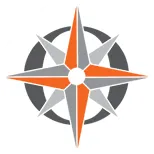Calling all entrepreneurs! Transform your small business into a wealth-building machine by leveraging the best small business retirement plan designed to benefit both you and your employees!

Choosing the right retirement plan is a pivotal decision for self-employed individuals and small business owners. With a wide variety of options available, each with its own set of benefits and requirements, choosing the right option for you and your business can seem overwhelming. Your retirement planning decisions directly affect your long-term financial security and ability to maximize tax advantages.
The small business retirement plan landscape offers a wide variety of options to you as an entrepreneur — each tailored to meet the diverse needs and goals of self-employed individuals and small business owners — but understanding which aligns best with your unique business and personal financial goals is paramount to successful retirement planning and your longer-term economic well-being. Implementing the right plan can help you effectively save for retirement while also optimizing your current cash flow and future wealth-building opportunities.
This article will break down the most popular retirement account options for self-employed individuals and small business owners, offering insights into how each plan works, its advantages, and potential drawbacks. Whether you’re aiming for simplicity, tax benefits, or maximized savings and wealth-building, this guide will help you navigate your choices to find a small business retirement plan that best suits your business and personal retirement objectives.
Self-Employed and Small Business Retirement Plan Options
Choosing the right retirement plan for your business can be daunting with so many different options available. In this section, we’ll simplify each plan by exploring the details, benefits, and drawbacks, making it easier for you to consider the right one for your unique needs.
Traditional and Roth IRAs
There are two popular Individual Retirement Account (IRA) options: Traditional and Roth. As a small business owner or self-employed individual, IRAs can be attractive because, as an individual, you do not have to have an employer-employee relationship involved to contribute to the plan.
Traditional IRA
A Traditional IRA allows you to contribute (and deduct) pre-tax dollars, reducing your taxable income for the tax year that you make your contribution. Earnings in a Traditional IRA grow tax-deferred until you withdraw them in retirement, at which point they are taxed as ordinary income.
This account may be ideal for you if you expect to be in a lower tax bracket during retirement than you are now or are in need of a current income tax deduction. However, required minimum distributions (RMDs) start at age 73, which can impact your retirement planning if not part of your existing withdrawal plan.
Pros:
- Immediate tax deduction on contributions.
- Tax-deferred growth.
- Potential for lower tax rate upon withdrawals (if you are in a lower bracket during retirement).
- No income limitations for contributions.
- Spousal IRA contributions are allowable, even for a non-working spouse.
Cons:
- Tax deductibility is limited based on your modified adjusted gross income (MAGI), and whether you are eligible for a retirement plan through your employer.
- Taxes are due on withdrawals.
- Lower contribution limits ($7,000, or $8,000 if you're age 50 or older).
- RMDs are mandatory at age 73.
- Early withdrawal penalties before age 59 ½.
Roth IRA
Different from Traditional IRAs, Roth IRA contributions are made with after-tax dollars. While you don’t get a tax deduction on your contributions, withdrawals — including earnings on your contributions — are tax-free! This can be beneficial if you believe you may be in a higher tax bracket during retirement.
Unlike Traditional IRAs, Roth IRAs do not require RMDs, which means your money can grow for as long as you wish.
Pros:
- Tax-free withdrawals of both contributions and earnings.
- Tax-free growth of contributions.
- No RMDs during the account holder’s lifetime.
- Flexible contributions.
Cons:
- Contributions are not tax-deductible.
- Income limits may restrict eligibility ($228,000 if filing a joint return or qualifying widow(er), $146,000 for all other individuals).
- Lower contribution limits ($7,000, or $8,000 if you're age 50 or older).
- Early withdrawal penalties before age 59 ½ applied to any growth in the account.
SEP IRAs
The Simplified Employee Pension (SEP) IRA is designed for self-employed individuals and small business owners, offering higher contribution limits than Traditional or Roth IRAs. Contributions are fully tax-deductible, and SEP-IRA accounts grow tax-deferred until funds are eventually withdrawn. This plan is particularly beneficial if you have fluctuating income, or want to make more substantial contributions in more profitable years.
With a SEP-IRA, business owners can contribute to their own and to their employees’ retirement plans. It is important to note that these plans are fully employer-funded, unlike a 401(k) plan. Usually, a SEP-IRA is best for a sole proprietor or contractor.
Pros:
- High contribution limits (the lesser of 25% of compensation or $69,000 in 2024).
- Fully tax-deductible employer contributions.
- Flexible contribution amounts based on business income.
- Ability to manage investment portfolio without tax liability.
- Low administrative responsibilities.
Cons:
- Employer contributions only (no employee contributions).
- Contributions must be made for all eligible employees if applicable.
- Early withdrawal penalties before age 59 ½.
Individual/Solo 401(k)s
An Individual 401(k), also known as a Solo 401(k), is a retirement savings plan designed for self-employed individuals or small business owners with no employees (excluding a spouse). It works much like a standard 401(k), but is tailored for businesses with only one participant (or two, if your spouse is included).
This plan is designed to allow individuals to take advantage of the higher contribution limits and flexibility of a 401(k) plan, even if you don't have a traditional employer.
Traditional Solo 401(k)
The traditional Solo 401(k) allows for both employee and employer contributions, which can provide a higher maximum contribution limit. Contributions to a Traditional Solo 401(k) are tax-deductible, and the account grows tax-deferred. This plan may be a good option for you if you are self-employed with no employees (other than a spouse), maximizing your retirement savings potential.
Pros:
- Immediate tax deduction on contributions.
- High contribution limits:
- Elective Deferrals: Up to 100% of compensation, up to $23,000 in 2024.
- Employer Nonelective Contributions: 25% of compensation as defined by the plan as long as total contributions to a participant account are not more than $69,000 for 2024.
- Catch-up contributions are available (if age 50 or older).
Cons:
- Administrative responsibilities (you will have to make annual IRS tax filings once you hit $250,000 or more in assets)
- Contributions are subject to income limits (The maximum compensation that can be considered when calculating your contribution is $345,000 in 2024).
- Contributions must be made by the tax filing deadline.
- Early withdrawal penalties before age 59 ½.
Roth Solo 401(k)
A Roth Solo 401(k) combines the high contribution limits of a Traditional Solo 401(k) with the tax-free withdrawals of a Roth. Your contributions are made with after-tax dollars (read: no current income tax deduction), but withdrawals — contributions and earnings — are tax-free in retirement. This could be an option worth considering if you expect to have higher tax rates upon retirement.
Pros:
- Tax-free withdrawals in retirement.
- High contribution limits (same as Traditional Solo 401(k) plans).
- Flexible annual contributions.
- Unlike Roth IRAs, there are no income limitations.
Cons:
- Administrative responsibilities (you will have to make annual IRS tax filings once you hit $250,000 or more in assets).
- Contributions are subject to income limits (same as Traditional Solo 401(k) plans).
- Contributions must be made by the tax filing deadline.
- Early withdrawal penalties before age 59 ½.
SIMPLE IRAs
The Savings Incentive Match Plan for Employees (SIMPLE) IRA is another great option for small business owners with up to 100 employees. It offers a low-cost path to provide retirement benefits to employees with lower contribution limits compared to a SEP IRA or Solo 401(k). Both employers and employees can contribute, with the employer required to match employee contributions up to a certain percentage.
Pros:
- Easy to set up and administer.
- All employer and employee contributions are tax-deductible.
- Lower administrative costs and responsibilities.
Cons:
- Somewhat lower contribution limits (Up to $16,000 in 2024).
- Required employer-matching contributions (up to 3% of employee contributions).
- Early withdrawal penalties before age 59 ½.
401(k) Plans
A 401(k) plan can be a powerful retirement savings vehicle, allowing for contributions from both employers and employees. Traditional 401(k) plans are commonly offered by larger employers, but can also be established by small business owners. Not only do they offer a tax-efficient way to save for retirement, but they also provide an attractive benefit to help recruit and retain employees.
Traditional 401(k)
With a Traditional 401(k) plan, employee contributions are made pre-tax, meaning employee taxable income is reduced dollar-for-dollar on any contributions made to the account. Contributions and earnings grow tax-deferred, but withdrawals are taxed in retirement.
Pros:
- Higher contribution limits ($23,000 in 2024).
- Employee contributions act as a tax deduction, reducing taxable income dollar-for-dollar.
- Employers may match employee contributions.
Cons:
- IRS tax filing requirements for employers.
- Required minimum distributions.
Roth 401(k)
The Roth 401(k) offers the same high contribution limits as the Traditional 401(k), but allows for after-tax contributions. This means that withdrawals occur tax-free — that is if the account has been held for at least five years and you are at least 59½. This option could be ideal for those expecting to be in a higher tax bracket in retirement.
Pros:
- Tax-free withdrawals in retirement.
- Higher contribution limits ($23,000 in 2024).
- Employers may match contributions.
Cons:
- Contributions are made with after-tax dollars - no immediate income tax deduction.
- Early withdrawal penalties before age 59 ½ applied to any growth in the account.
Profit-Sharing Plans
Traditional Profit-Sharing Plan
A Profit Sharing Plan allows businesses to make discretionary contributions to employees' retirement accounts. Contributions are made by the employer and can be based on a percentage of profits, giving flexibility to adjust contributions based on the company’s financial performance.
Pros:
- Flexible contribution amounts.
- Tax-deductible contributions for the business and tax-deferred growth for participants.
- Can be paired with other retirement plans.
- Can help attract and retain employees.
Cons:
- Contribution amounts can vary annually (which can make retirement planning more difficult).
- Requires annual IRS tax filings and administrative duties.
- Early withdrawal penalties before age 59 ½.
New Comparability Profit-Sharing Plan
The New Comparability Plan is a type of profit-sharing plan that allows for different contribution rates based on employee classification. This can be advantageous for business owners who want to allocate more significant contributions to older, more highly compensated employees.
Pros:
- Ability to target higher contributions to key employees.
- Flexible contribution options.
- Tax-deductible contributions for the business and tax-deferred growth for participants.
Cons:
- IRS tax filings and administration and compliance requirements.
- Contribution amounts can vary annually (which can make retirement planning more difficult).

Defined Benefit Plans
Traditional Defined Benefit Plan
Traditional defined benefit plans offer a predetermined benefit amount based on a formula that will adjust contributions to reach a desired retirement income. These plans are more common in larger businesses but can be a powerful retirement savings tool for small business owners. They allow for higher contributions, making them an attractive option for business owners looking to save for retirement more aggressively.
Traditional defined benefit plans are typically known as pension plans, where employees receive a guaranteed monthly benefit starting at retirement. These plans are largely funded by employers, making them an attractive benefit for employees.
Pros:
- Guaranteed retirement income.
- High contribution limits (the lesser of 100% of the employee’s average compensation over 3 calendar years or $275,000 for 2024).
- Beneficial for business owners who want predictable retirement income.
- Can help attract and retain employees.
- Employer contributions are generally tax-deductible.
Cons:
- High administrative costs and IRS tax filing requirements.
- Less flexibility in contribution amounts.
Cash Balance Plan
A cash balance plan is a type of defined benefit plan that defines the employee benefit in terms of a stated account balance. It combines features of defined contribution plans with those of traditional pensions, allowing for more predictable contributions and benefits.
Like traditional defined benefit plans, cash balance plans are typically employer-sponsored; however, these plans do not guarantee a specific monthly balance. Instead, cash balance plans offer a guaranteed cash balance at retirement.
Pros:
- Predictable retirement benefits.
- High contribution limits.
- Can be combined with other retirement plans.
- Can help attract and retain employees.
- Employer contributions are generally tax-deductible, and grow tax-deferred.
Cons:
- Higher administrative and actuarial costs.
- Taxes are due on withdrawals.
- Requires more complex plan management.
What’s the Right Choice for You?
Choosing the best retirement plan means you need to carefully weigh your business’s financial landscape, your personal retirement aspirations, and the needs of your employees. Each retirement option offers its own unique set of features, benefits, and drawbacks, so it's essential to align your choice with your broader personal and business financial goals.
By thoroughly understanding the strengths and limitations of these retirement accounts, you can confidently select a plan that not only meets your retirement planning goals but also maximizes your savings potential.
It can feel overwhelming to weigh all of these options. Choosing the right account (or combination of accounts) for you and your business could make a drastic impact on your retirement savings — so how do you decide what’s best for you?
If you want to feel confident in your retirement planning decisions, reach out to us and schedule a 20-minute “Ask Anything” call - we are confident it will be time well spent!
At Towerpoint Wealth, we help you remove the hassle of properly coordinating all of your financial affairs, so you can live a happier life and enjoy retirement. If you are worried about how the 2024 election could affect your financial future, we welcome talking further with you about your personal situation.
Worried about whether you have enough set aside to retire? Check out our “Retiring with 2 Million Dollars” guide to learn five specific steps you can take immediately to work to grow your net worth!

Joseph Eschleman
Certified Investment Management Analyst, CIMA®
Jonathan W. LaTurner
Wealth Advisor
Steve Pitchford
CPA, Certified Financial Planner®
Lori A. Heppner
Director of Operations
Nathan P. Billigmeier
Director of Research and Analytics
Michelle Venezia
Client Service Specialist
Luis Barrera
Marketing Specialist
Megan M. Miller, EA
Associate Wealth Advisor
Connect with Towerpoint Wealth, your Sacramento Financial Advisor, on any of these platforms, and send us a message to share your preferred charity.
We will happily donate $10 to it!
Follow TPW on LinkedIn
Follow TPW on YouTube
Follow TPW on Facebook
Follow TPW on Instagram
Follow TPW on X
Follow TPW Podcast








